Huntsman Spider
- Article
- Huntsman Spider
Huntsman Spider
Scientific Name: Family Sparassidae
How to identify a huntsman spider
Huntsman spiders are large, long-legged spiders. They are mostly grey to brown, sometimes with banded legs. Many huntsman spiders, especially Delena (the flattest), and including Isopeda, Isopedella and Holconia, have rather flattened bodies adapted for living in narrow spaces under loose bark or rock crevices. This is aided by their legs which, instead of bending vertically in relation to the body, have the joints twisted so that they spread out forwards and laterally in crab-like fashion ('giant crab spiders'). Both Brown (Heteropoda) and Badge (Neosparassus) Huntsman spiders have less flattened bodies. Brown Huntsman (Heteropoda species) spiders are patterned in motley brown, white and black.
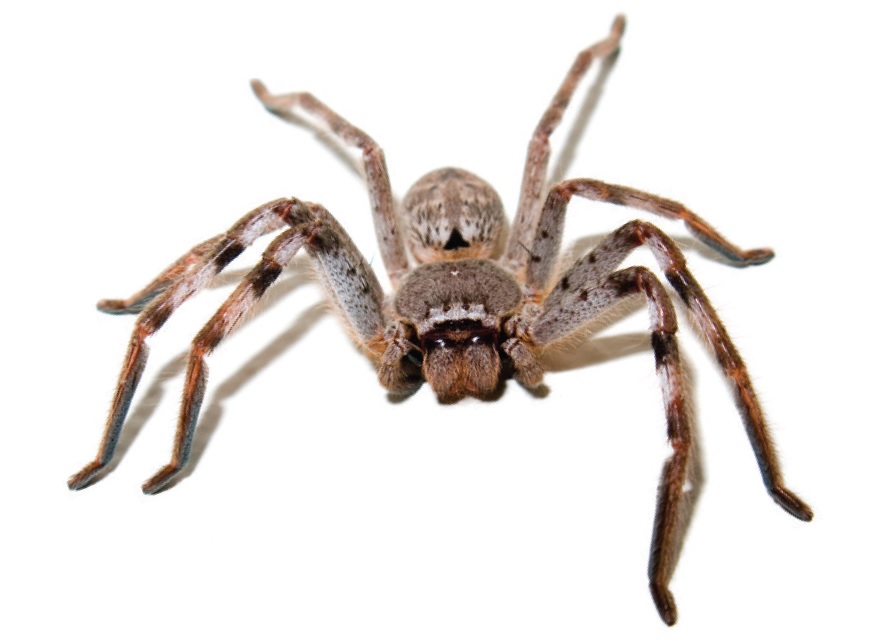
Where are huntsman spiders commonly found?
Huntsman Spiders are found living under loose bark on trees, in crevices on rock walls and in logs, under rocks and slabs of bark on the ground, and on foliage. Dozens of the social huntsman species, Delena cancerides, can be seen sitting together under bark on dead trees and stumps (notably wattles) but they can also be found on the ground under rocks and bark slabs.
Huntsman spiders of many species sometimes enter houses. They are also notorious for entering cars, and being found hiding behind sun visors or running across the dashboard.
Why are huntsman spiders considered a pest?
Huntsman spiders are not deadly to humans however they are a venomous spider, and their bites can be painful to humans, causing localised swelling and pain. Some people may also experience headaches and nausea. However, the symptoms are generally mild.
What is the biology and lifecycle of a huntsman spider?
The female Huntsman (Isopeda, for example) produces a flat, oval egg sac of white papery silk, and lays up to 200 eggs. She then places it under bark or a rock, and stands guard over it, without eating, for about three weeks. During this period the female can be quite aggressive and will rear up in a defensive display if provoked. Some species will even carry their egg sac under their bodies while moving about. Delena females lay a ground-sheet of silk upon which the egg sac is anchored while the eggs are laid into it. They will then complete her egg sac and pick it up, leaving the silk ground-sheet behind. Incubation periods vary and are probably influenced by climatic conditions.
In some cases (Isopeda), the female may moisten and tear the egg sac open, helping her spiderlings to emerge. The mother stays with them for several weeks. Young Huntsman spiders are pale. They undergo several moults while still with their mother, hardening to a darker brown, and eventually disperse. Huntsman spiders, like all spiders, moult in order to grow and often their old skin may be mistaken for the original spider when seen suspended on bark or in the house.
The lifespan of most Huntsman species is about two years or more.
Management Tips for Huntsman Spider
Huntsman spiders are a nomadic spider with no fixed hiding place, therefore it is quite difficult to target Huntsman with a treatment. However, as they are hanging around your home looking for potential prey, a general pest treatment to the outside of the house to eliminate insects and web-building spiders, will make your house less attractive to Huntsman.
General Spider Prevention Tips
-
Keeping garden beds and rubbish away from the edge of the house will significantly reduce the spider population.
-
If garden beds next to the house are kept in place, it is important to keeping vegetation trimmed back from the edge of the house and paths.
-
Make sure insect screens and draft excluders are in good repair and well fitting
-
Keep clothes and shoes off the floor to reduce spider hiding places.
General Spider Control Tips
-
The best treatment for web-building spiders is to spray their webs and hiding places with an insecticide (ready to use pump back or aerosol). The key tip to get the best performance is to wait a day or two after spraying before brushing down any webs. This ensures the spiders will have picked up a lethal does of insecticide (by walking on the web) and by using a brush (rather than hose), you can ensure the insecticide remains in place to prevent new spiders taking up residence.
-
To prevent web-building spiders take up residence in the first place, spraying around doors, windows and vents, as well as under eaves and guttering delivers excellent results. As these spots tend to be sheltered from sun and rain, the treatment can last many months.
-
It is a lot more difficult to prevent running spiders entering the home. Carrying out a preventative spray around the perimeter of the home and any openings will have some benefit, although running spiders often walk on the tips of their legs, preventing them from picking up a lethal dose of insecticide. However, if you carry out a preventative treatment for web-building spiders and other insects, the numbers of running spiders will be greatly reduced, as there will be little prey for them to feed on.
-
Even with the best control program the occasional spider may get in. A crawling insect aerosol should be kept on hand to spray the occasional unwanted spider. Ensure the spider receives a good dose and keep your distance.
PRODUCT SOLUTIONS
-
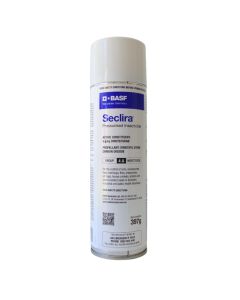 Seclira Pressurised Insecticide 397g5g/kg Dinotefuran
Seclira Pressurised Insecticide 397g5g/kg DinotefuranSeclira Pressurised Insecticide is a fast-acting, non-repellent, ready-to-use product with System III compatibility for the control of a broad range of pests including ants, and cockroaches.
-
 Coopex Dust Insecticidal Dusting Powder10g/kg Permethrin
Coopex Dust Insecticidal Dusting Powder10g/kg PermethrinCoopex Dust Insecticidal Dusting Powder is registered for the control of cockroaches, ants, fleas, silverfish and bed bugs in and around domestic and industrial premises, food preparation and storage areas. Also for control of mushroom flies in mushroom housing and bees in wall cavities.
-
 Biflex Aqua Max Insecticide and Termiticide100g/L Bifenthrin
Biflex Aqua Max Insecticide and Termiticide100g/L BifenthrinBiflex AquaMax is the first ever Professional Strength, multi-insecticide and termiticide. Effective on a wide range of common household pests and all termite species in Australia.
-
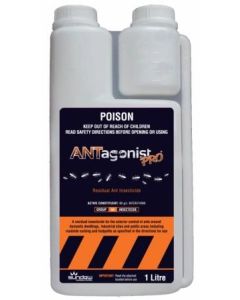 Antagonist Pro Insecticide80g/L Bifenthrin
Antagonist Pro Insecticide80g/L BifenthrinANTagonist PRO insecticide is a suspension concentrate formulation containing a Polymer Enhanced Synthetic Pyrethroid approved for the treatment of ants, spiders, wasps, cockroaches, mosquitoes, midges, fleas, flies, ticks, termites and turf pests including lawn armyworms, sod webworms, argentine stem weevil, billbug, African black beetle, ants and ornamental pest including mites, aphids, caterpillars, loopers, earworm, budworm, light brown apple moth, whitefly, mealybug, thrips and cutworms.
-
 Demand 100CS Insecticide100g/L Lambda-Cyhalothrin
Demand 100CS Insecticide100g/L Lambda-CyhalothrinDemand 100CS is a cost effective and long lasting insecticide for the controls of ants, cockroaches, fleas, flies, mosquitoes, silverfish, ticks and spiders for up to up to 12 months indoors and up to 3 months outdoors. It can be applied to foliage for up to 14 weeks of mosquito control.
-
 Delta Pro 25SC Professional Insecticide25g/L Deltamethrin
Delta Pro 25SC Professional Insecticide25g/L DeltamethrinFor the control of a range of insect pests such as spiders, cockroaches, flies, ants, mosquitoes in various situations.
-
 Biflex Ultra Lo-Odour 100EC Termiticide & Insecticide100g/L Bifenthrin, 533g/L Liquid Hydrocarbons
Biflex Ultra Lo-Odour 100EC Termiticide & Insecticide100g/L Bifenthrin, 533g/L Liquid HydrocarbonsBiflex Ultra-Lo-Odour Termiticide and Insecticide is a cost-effective, broad spectrum, long residual, liquid insecticide and termiticide for use as an internal and external treatment of a wide range of pests.
-
 Suspend Flexx Insecticide25g/L Deltamethrin
Suspend Flexx Insecticide25g/L DeltamethrinSuspend Flexx Insecticide is a synthetic pyrethroid (3A) formulation for the knockdown and residual control of a range of insect pests in various indoor and outdoor situations.
-
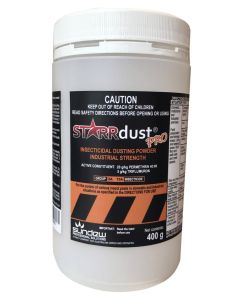 Starrdust PRO One-Shot Insecticidal Dust 400g20g/kg Permethrin, 5g/kg Triflumuron
Starrdust PRO One-Shot Insecticidal Dust 400g20g/kg Permethrin, 5g/kg TriflumuronThe Starrdust PRO One-Shot Insecticidal Dust 400g is an industrial-strength dust designed for use with the Starrdust PRO Duckbill Duster. It is a ready-to-use broad-spectrum insecticide with a unique formulation. It controls a wide range of insect pests including cockroaches, silverfish, spiders, ants, fleas, carpet beetles, bed bugs, European wasps, feral honey bees, bird mites, subterranean termites, hide beetles, millipedes, woodlice and clothes moths.
-
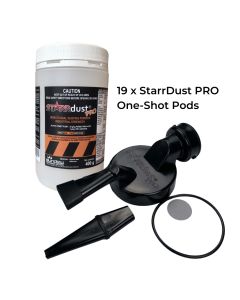 Starrdust PRO One-Shot Insecticidal Dust 19 x 400g + Duckbill20g/kg Permethrin, 5g/kg Triflumuron
Starrdust PRO One-Shot Insecticidal Dust 19 x 400g + Duckbill20g/kg Permethrin, 5g/kg TriflumuronA convenient kit of 19 x Starrdust PRO One-Shot Insecticidal Dust 400g Pods and a bonus Duckbill Duster. StarrDust PRO is an industrial-strength dust designed for use with the Starrdust PRO Duckbill Duster. It is a ready-to-use broad-spectrum insecticide with a unique formulation. It controls a wide range of insect pests including cockroaches, silverfish, spiders, ants, fleas, carpet beetles, bed bugs, European wasps, feral honey bees, bird mites, subterranean termites, hide beetles, millipedes, woodlice and clothes moths.
-
 Tempo Residual Insecticide 1L25 g/L betacyfluthrin
Tempo Residual Insecticide 1L25 g/L betacyfluthrinTempo Residual Insecticide is a fast-acting, knock-down, broad-spectrum insecticide for general insect control in domestic and commercial situations, as well as for the control of pest insects of turf and ornamental plants.
JOIN OUR NEWSLETTER NOW!
Be the first to hear about the latest specials, products, tips and ideas.

